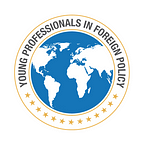A Lesson in Discipline: Jordan’s 2020 Mark on the World
By Diala Ghneim
As COVID-19 spread across the world, media outlets focused on different countries’ responses to the pandemic and the differences in the number of deaths. While larger, more powerful countries have had difficulty tackling the current crisis, developing countries have been at the forefront of COVID-19’s battle and have seen ground-breaking results.
One country with limited resources; conflict on all its borders; refugees from neighboring countries; and plagued by public debt, slow economic growth, and high unemployment rates proved to be a relentless fighter during COVID-19. There have been over 1,100 cases since the arrival of the pandemic, 960 recoveries, and 10 deaths. So, how did Jordan do it?
Rapid thinking
As soon as reports of a new global pandemic emerged, the Jordanian government set up an Epidemics Committee comprised of healthcare experts, government officials, and military personnel. The committee issued response protocols and designated five hospitals to treat incoming cases of COVID-19.
On March 2, Jordan reported its first case of COVID-19 after an individual returned from Italy. The government quickly placed him in isolation, sent a specialized team to disinfect his home, and placed his family into mandatory quarantine. Contact tracing identified 43 people he came in contact with and also placed them all in quarantine.
By March 10, Jordan began imposing a series of pre-emptive measures, closing the country’s borders imposing a travel ban, shuttering educational institutions, and limiting gatherings to no more than 10 people.
Despite these countermeasures, cases continued to rise after a Jordanian wedding attended by 450 people unleashed the virus in new parts of the country. In response, on March 17, King Abdullah announced a state of emergency and imposed a curfew, with the Jordanian military being deployed to enforce it.
Fruitful Partnerships
Perhaps the most notable aspect of Jordan’s model is the productive partnership between the public and private sectors after the pandemic struck. Leading with a nationwide curfew, Jordan’s airport announced it would officially cease all incoming and outgoing flights starting March 17. Over 5,000 Jordanians flocked back to the homeland and were quarantined for 14 days in five-star hotels. To support this effort, the Jordanian government coordinated partnerships between the hotel industry, the tourism sector, and ride hailing companies to cover costs and ensure the safety of individuals.
Both public and privately-owned media outlets began a campaign to encourage citizens to stay home. Tips, such as leaving shoes at doorsteps and correctly disposing facemasks and gloves, were posted to social media. And television ads showcased the efforts of Jordanian citizens, instilling a spirit of solidarity within local communities.
Transparency and Trust
During a pandemic, collecting and presenting data is crucial to maintaining a sense of normalcy, and since the start of the outbreak in Jordan, the government has kept a direct line of communication open with the public. There are over 106 hospitals across the country with approximately 12,000 beds. Making these numbers known to Jordanians helped to portray the seriousness of the crisis and encouraged citizens to cooperate with the government’s response.
Unifying, updating, and disseminating data through select channels has also aided in building trust between those on the front lines and everyone else. A daily official press conference publicly announced the number of confirmed cases, recoveries, testing areas, and deaths. In addition, the Ministry of Health and the Ministry of Digital Economy and Entrepreneurship collaboratively produced a COVID 19 website to help spread awareness and information to the public.
Confidence in government regulations has only grown, as other measures were taken to protect Jordanians. For instance, after commodity prices increased, the Ministry of Industry and Trade condemned owners and issued standardized pricing guidelines. Administrative detainees were released and those unable to pay their debts had their detention postponed.
Conclusion
Jordan officially ended its lockdown on June 4, which followed by a gradual return of normalcy throughout the Kingdom. And although the country has taken strides to control the virus, the Jordanian government has still activated Defense Order 11, requiring individuals to wear masks and gloves in public places.
The question is, how do Jordanians feel about the way their country has handled COVID-19? A poll conducted in April by the Strategic Studies Center showed 87 percent of Jordanians are satisfied by the government’s response with 59 percent of responders opting for a continuation of the curfew until Jordan is coronavirus-free for two weeks.
Countries, such as Jordan, have helped to play a role from the current pandemic spiraling even further out of control, but only time will tell if the government will continue to contain the pandemic and what the effects of Jordan’s initial response will be.
Diala Ghneim has previously interned with the Jordanian Ministry of Foreign Affairs and the Permanent Mission of the Hashemite Kingdom of Jordan to the United Nations before starting her communications and advocacy career with multilateral institutions and non-governmental organizations dedicated to crisis affected countries. You can find her on twitter @Diala_Ghneim.
